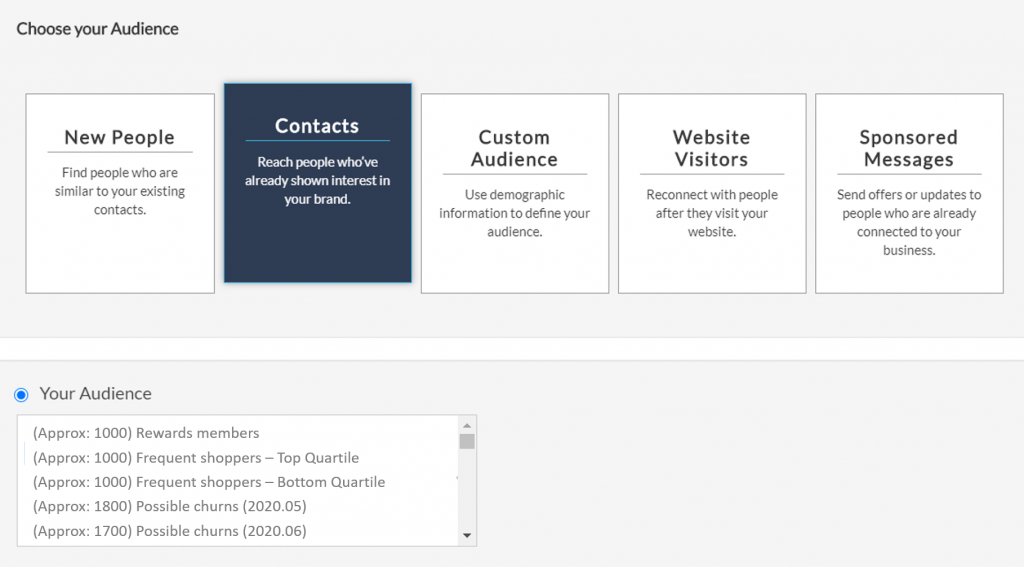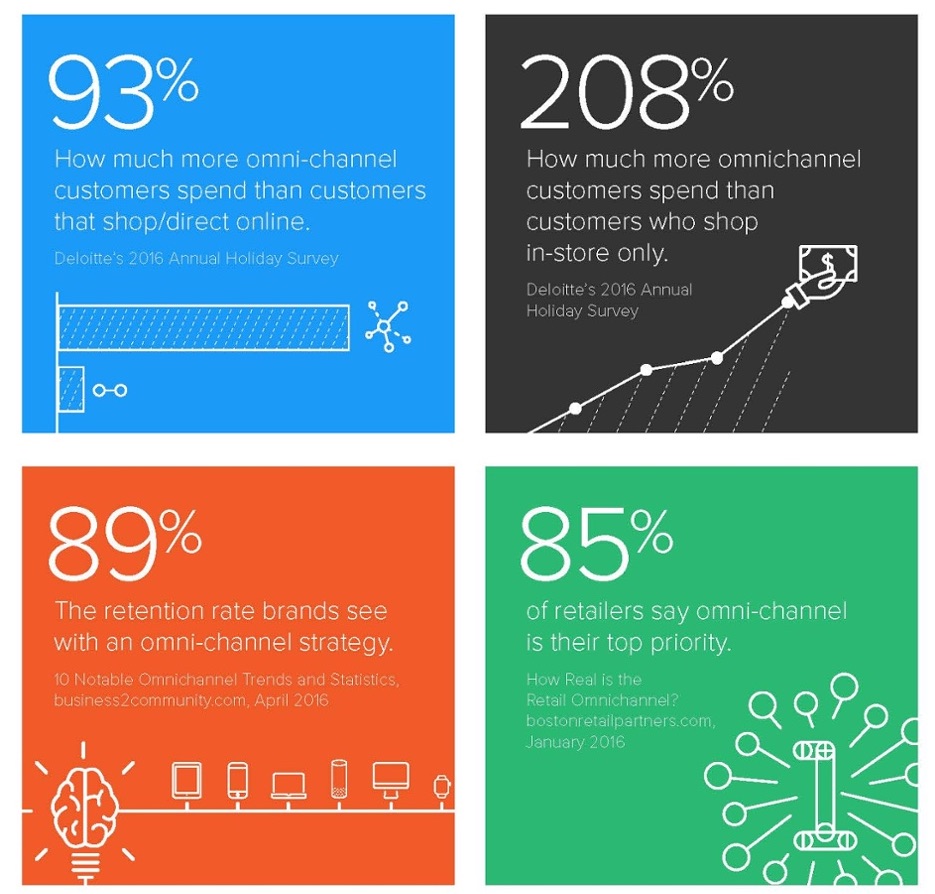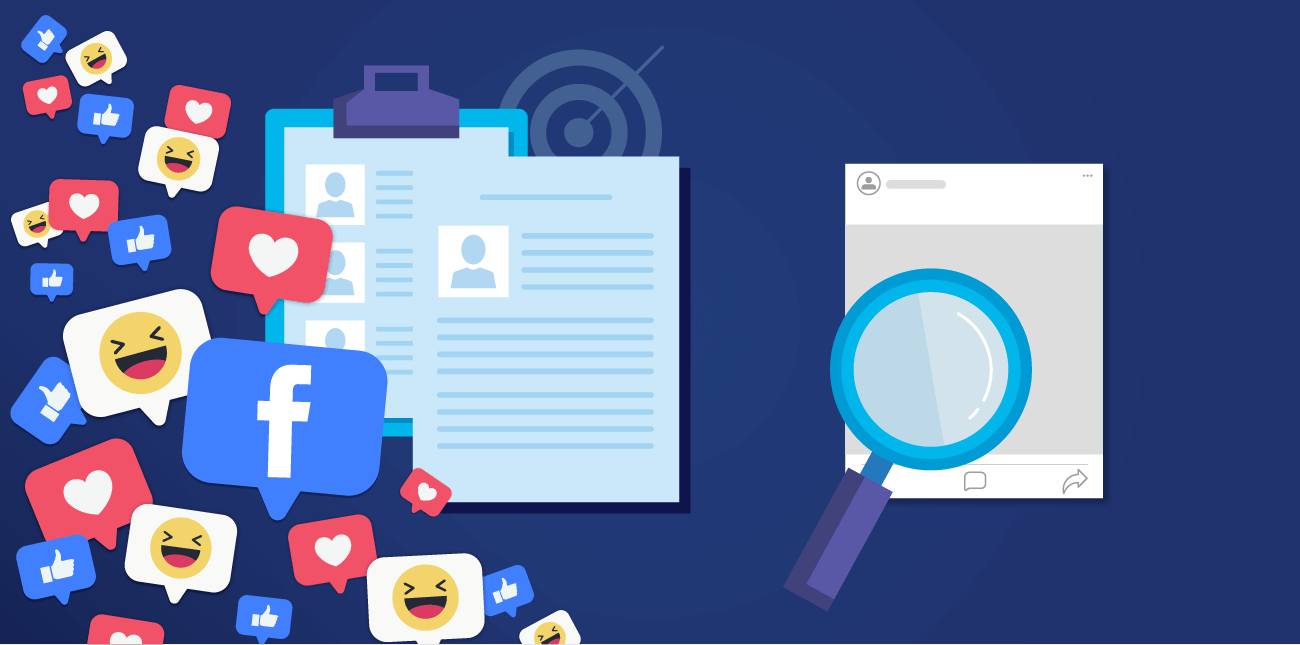The ability to use Facebook ad segmentation quickly and effectively is crucial to generating higher returns from your ad budget. You also enjoy better returns if you couple Facebook ad segmentation with omnichannel customer engagement. Advertising costs decrease while customer satisfaction and sales increase.
Getting traffic to your website is progressively becoming more expensive. Revealbot informs us that in December of 2020, Facebook CPM, or the cost per 1000 visitors, hit a high of $16.27, up from $8.59 in January, nearly doubling in only one year.
So, what’s can you do?
More and more, marketers realize that they have to use customer value optimization to maximize each visitor’s purchase to balance ever-increasing ad costs. Segmentation is the key to increasing CVO because you can target precisely and personalize the customer experience.
It’s in the area of Facebook ad targeting —an email— that most marketers need to improve their segmentation practices. 89% of businesses using email marketing send broadcast emails to their entire list instead of segmenting the list to send personalized, highly relevant messages.
Facebook ad creators are also guilty of failing to segment enough and failing to use custom audiences and lookalike audiences, both of which can generate very high returns compared to other advertising. In this easy-to-read post, you will discover how simple it is to do proper segmentation when you work with advanced tools.
Segmentation overview
Segmentation means dividing your customers into groups. Marketers define each group by characteristics like demographics, behavior, shared interests, and geolocation. Segmentation based on actions people have taken on your website is one of the easiest and most useful ways to segment.
Once you have your customers divided into groups, you can create personalized ad campaigns that give your ads a high Facebook relevance score. The higher your relevance score is, the cheaper your ads become. Drive ad costs down by using segmentation to break your customer base into groups:
- When you place your initial Facebook ad to cold traffic.
- When you retarget visitors to your website.
- When using custom audiences.
- In your email correspondence.
Segmentation in cold traffic Facebook ads
Using Facebook’s built-in segmentation tool does get cold traffic to your site. However, in today’s increasingly expensive and competitive environment, you need the edge that more precise segmentation gives you.
Facebook ads using custom, lookalike audiences is the easiest, least expensive method you can use to generate highly targeted cold traffic. You can quickly create lookalike audiences using data you gather from your website with the right tools —tools that enable you to target precisely using proper segmentation. You get the best offer in front of the correct person at the optimal time.
When you get targeted traffic to your site, you have already done the most challenging and most expensive part of marketing. Cold traffic becomes warm traffic. You now need to keep that traffic engaged and make it easy for visitors to buy more of what you are selling.

Segmentation when retargeting with Facebook ads
Retargeting means that you send ads to people who have already been to your site based on the pages visited and the actions taken. Retargeting ads generate some of the highest conversion rates because you’re advertising to people who have been to your site and know you. They only need a reminder to bring them back.

You can create retargeting segments using virtually any criteria, but here are some useful ones:
- Cart abandonment. Visitors often leave a website without purchasing for many reasons —maybe they didn’t have time, had second thoughts, or someone distracted them. Using a retargeting ad works well to bring those people back to complete the purchase.
- Upsells and cross-sells. The easiest sales are those to your current customers who just purchased something from you. You can run ads targeting your client base to goad them to buy a more expensive product in an upsell or a similar product in a cross-sell.
- Accessories. If a customer has just bought a dress from you, they may also need a matching scarf, handbag, and shoes. Think about how Amazon sells accessories well. Directly below the image on every product page is a section titled “Frequently Bought Together,” where they list three accessories. You can do the same in a retargeting ad.
- Price drops. Everyone loves a lower price. Inform people who have browsed relevant sales pages when you offer discounts.
- Repurchase reminders Consumables need repurchasing, and services need renewing.
- Lead form follow-up People who have signed up on website forms often need a nudge to move them on into the next step in your funnel. People who failed to sign up may respond well if you offer them a different lead magnet.
- Blog readers If someone has taken the time to read a how-to post, they are a good candidate for an ad selling a product, course, or software.
Sending retargeting ads to segments increases sales and advertising ROI quickly. After you create a segment, you will need to create a custom Facebook audience to target your segment.
Segmentation and custom Facebook audiences
Using Facebook’s custom audiences feature allows you to segment your customer base outside of Facebook. You can create a list using data gathered from tracking visitors on your website and data from your email list. Upload your list in the Facebook Ads Manager using custom audiences. You will get precisely targeted ads that generate high returns.
ContactPigeon makes it easy to create a custom audience by producing an exceptionally well-targeted list to use. Here’s how to create your Facebook custom audiences with your eCommerce data:
- Use ContactPigeon segmentation to create a customer list. you can do this by defining the criteria for customer attributes, such as amount spent, last visit date, most recent purchases, etc.
- Once the list has been created, you’re ready to synch it with your Facebook account. The list is refreshed dynamically, so you will always be working with the most up-to-date custom audience list. *Hint: no more uploading spreadsheets!*
- That’s all. It takes few hours to a day for Facebook to approve the custom audience synchronization, depending on the size of the list. Now you are ready to start running targeted Ads.

You will be able to choose whether you want to advertise only to your custom audience or use a lookalike audience. If you’re advertising to people who visited a sales page without purchasing, you will want to create a custom audience using only your list of those non-buyers to bring them back to complete their purchase.
Suppose you want to engage more people who have the same characteristics as people who purchased an item. In that case, you will want to have Facebook generate a lookalike audience composed of people who match buyers.
- Use ContactPigeon to generate a list of people who have bought your product.
- Choose the lookalike audience option when uploading the list.
- Facebook will search its database to find more people that match your buyers’ characteristics to display ads.
Your ads will have a high conversion rate because your targeting is spot-on.
Omnichannel customer engagement
Omnichannel has become the latest buzzword in marketing. An omnichannel customer engagement model presents consumers with various touchpoints scattered across multiple channels enabling them to enjoy a seamless experience. Consumers can interact with your brand anywhere they choose to and enjoy the same information on each channel or device.
Let’s say a shopper has found an item on your website that they want to purchase. They want to buy it in person and enter your retail store expecting to find the same thing, but it’s only available online. The shopper is disappointed and goes elsewhere.
Omnichannel solves this problem by merging the data on all channels. The same items displayed on your website are available in your store. Shoppers can be in your physical store:
- Using a smartphone to search for the right size and color on your website.
- Asking questions on chat.
- Checking the comments of other buyers on Twitter.
- Viewing different color combinations on Pinterest.
Omnichannel platform updates every touchpoint simultaneously.
Consumers and businesses are increasingly turning to omnichannel because it provides a seamless shopping experience that keeps people engaged with the brand and makes it easy for them to arrive at the best buying decision.

Omnichannel generates large amounts of information, so segmentation becomes crucial in filtering out irrelevant data and targeting consumers with the right personalized message at the right time in the right location.
Segmentation tools
Segmentation tools enable you to use customer value optimization (CVO) practices built around the marketing reality that it’s far easier —and less expensive— to sell to people who have already interacted with you than it is to find new customers.
CVO enables you to get the highest returns from increasingly expensive Facebook ads that get cold traffic into your sales funnel. Segmentation and omnichannel customer engagement are two of the most helpful CVO practices you can use to increase sales.
If you are segmenting for Facebook ads, email, or omnichannel marketing, your brand will benefit —and profit— from having a tool that:
- Gathers visitor’s names and email addresses.
- Tracks visitor interaction.
- Enables you to slice and dice visitors into any chosen segment.
- Sends personalized messages to the segment through the best channels.
- Gives you a segmented list to create custom audiences to target with highly relevant ads.
Easy-to-do segmentation makes conversion rates go way up. Your business becomes more profitable. Discover how ContactPigeon makes precise segmentation painless.

Let’s Help You Scale Up



![Benchmarking Growth Strategies of Top Fashion Retailers [Study]](https://blog.contactpigeon.com/wp-content/uploads/2025/11/top-fashion-retailers.jpg)